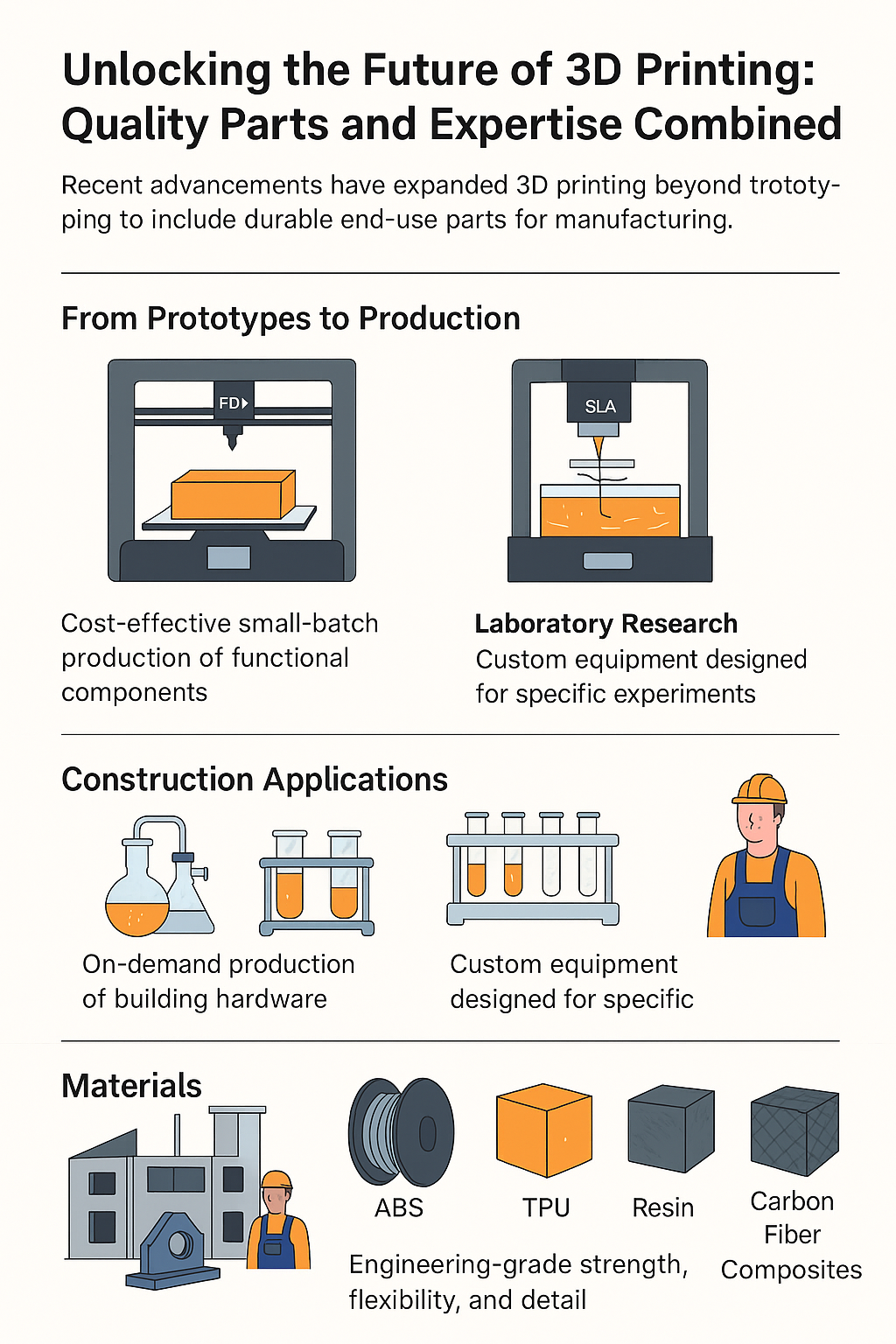Unlocking the Future of 3D Printing: Quality Parts and Expertise Combined
3D printing has emerged as a powerful tool, not just for prototyping, but for producing functional, end-use parts across industries. This transformation is particularly visible in sectors such as laboratory research and construction, where traditionally long lead times and rigid supply chains are being replaced with agile, on-demand production.
6/11/20252 min read


Understanding the Shift: From Prototypes to Production
In the past, 3D printing was mostly seen as a rapid prototyping tool, used to create visual or functional models before final production. But recent advances in hardware, materials, and software have redefined its role. Today, engineers and scientists are increasingly turning to additive manufacturing for:
Small-batch, high-precision tools
Lightweight structural parts
Durable, application-ready components
In short, 3D printing has grown from an experimental technology into a core method of manufacturing.
Why 3D Printing Excels in Lab and Construction Settings
Laboratory Use Cases
Laboratories often need highly specific tools: custom vial holders, reagent organizers, microscope mounts, and experimental rigs. These are rarely available off-the-shelf. 3D printing allows scientists to design, test, and iteratesolutions within days, supporting both flexibility and innovation.
Notably, resins and thermoplastics such as PETG or biocompatible SLA resins can withstand chemicals, autoclaving, or high-temperature sterilization—crucial for lab environments.
Construction & Industrial Applications
On job sites or in field engineering, time is critical. Whether it’s a custom bracket to mount sensors or a replacement spacer to keep projects moving, 3D printing allows construction teams to produce parts when and where they’re needed.
By reducing reliance on complex supply chains, 3D printing helps eliminate project delays caused by waiting for single-use parts or vendor backorders.
Material Science Meets Engineering Design
Behind every successful 3D print is a thoughtful match between material properties and design constraints. For instance:
ABS and ASA offer UV and impact resistance—ideal for outdoor use.
TPU provides flexibility—great for grips, seals, or connectors.
Resins deliver smooth surfaces and micron-level detail—crucial for scientific equipment.
Carbon-fiber filled filaments bring stiffness and strength without adding weight.
As engineers and designers become more familiar with these materials, they're unlocking new ways to replace—or even outperform—traditionally machined parts.
The Road Ahead: Democratized Manufacturing
3D printing is democratizing access to production. What used to require factories and injection molds can now be handled by small teams with digital design skills and a printer. This decentralization is empowering startups, research labs, and even individual creators to innovate without waiting for industrial-scale production.
As we look ahead, we can expect additive manufacturing to continue closing the gap between idea and implementation, with greater accessibility, smarter automation, and even on-site printing at construction zones or hospitals.
Final Thoughts
The future of manufacturing is already here—and 3D printing is a central part of it. Whether you're a scientist printing a one-of-a-kind test rig or a builder fabricating a last-minute spacer, additive manufacturing offers the tools to solve problems in real time.
And that’s not hype—it’s engineering evolution.
